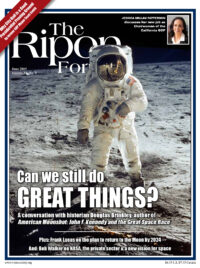
Income Share Agreements (ISAs) offer an innovative way to finance the education and training Americans need to secure good paying jobs. However, in order for more students to benefit, Congress needs to provide regulatory clarity establishing rules of the road along with important consumer protections.
Our country needs a skilled workforce for continued economic growth and individual prosperity. The changing nature of work is providing both the fastest job growth and income gains mostly to those with higher levels of skills and education. At the same time, businesses of all sizes report having difficulty finding workers with the knowledge and skills needed for available jobs. For example, more than 86 percent of small business owners who are hiring reported finding few or no qualified applicants with the skills needed for job openings. This skills gap is likely to widen as automation reshapes jobs, eliminates others, and creates new jobs in emerging industries.
Unfortunately, our current system of financing higher education and workforce development is inadequate for meeting this national skills challenge. It’s broken in three important ways. First, it rewards enrollment over student completion. So instead of getting degrees, students are dropping out. Only 30 percent of students complete a two-year program within three years. And just 49 percent of first-time, full-time students who receive a Pell Grant graduate within six years at four-year institutions. Second, financial aid growth has mostly consisted of loans. Total outstanding student loan debt has surpassed $1.5 trillion with 4.6 million borrowers in default. And third, our current financial aid system doesn’t support students who are participating in new workforce programs through coding bootcamps or technology apprenticeships.
ISAs offer a relatively straightforward and elegant solution. An investor, such as a university or job training provider, pays for the student’s education in exchange for a percentage of his or her future earnings for a set period after graduation. The total amount the student pays will vary depending on a number of factors, including the income share percentage, the length of the contract term, and the student’s income. Think of ISAs as equity financing instead of debt financing provided by student loans.
Think of ISAs as equity financing instead of debt financing provided by student loans … But the real strength of ISAs is that they share risk between the institution and the student.
ISAs are designed so that repayments rise and fall depending on students’ income during the repayment period, making them responsive not just to changing economic conditions but also to changing circumstances in life. If a person needs to stop working for a time, to tackle such real-life scenarios such as raising kids or retooling after they lose a job, their payments are halted until they once again rejoin the workforce.
But the real strength of ISAs is that they share risk between the institution and the student. Since repayment is based on the graduate’s salary, institutions have an incentive to ensure their programs meet employer expectations, that students complete the program, and that they are placed in the highest-paying job possible. This aligns financial incentives around student success, not just enrolling in a program.
Despite these benefits, ISAs are available in only a handful of institutions. The most well-known ISA is the “Back a Boiler” program based at Purdue University. Students opting into an ISA pay a portion of their income between 88 and 110 months, depending on the major, or until they pay back 250 percent of Purdue’s investment. Most students are expected to repay 1.67 times the amount of the original ISA, but those who earn less than $20,000 a year won’t be expected to repay anything.
Most schools don’t see ISAs as a primary means of funding the total cost for attending college. Instead, ISAs are used to complement other forms of financial aid and reduce the reliance on traditional loans – be they federal or private. In some cases, institutions are using ISAs with students who would not otherwise have access to financial aid such as the Fund Sueños program at Colorado Mountain College for its DACA students.
ISAs are also being used to support new workforce models, such as the technology apprenticeships offered at Kenzie Academy, Lambda School, and Make School. These programs are currently shut out of federal financial aid programs and have turned to ISAs as both a financing tool and a way to align financial assistance with educational outcomes and job placement.
The primary barrier preventing ISAs from serving more students is a lack of regulatory clarity.
The primary barrier preventing ISAs from serving more students is a lack of regulatory clarity. There are unanswered questions related to the tax and bankruptcy treatment of these agreements, verification of recipients’ incomes, and whether usury laws apply. Operational safe-harbors and consumer protections also need be codified to create the certainty needed for the ISA market to flourish while protecting students from overcommitting to future obligations and from potential bad actors in the market.
In past Congresses, policymakers have sought to address the lack of a legal or regulatory framework for ISAs. Senators Marco Rubio (R-FL), Tom Cotton (R-AR), and Todd Young (R-IN) introduced the Student Success Act (S. 268). The companion bill in the House – The Student Achievement Act (H.R. 3145) – was introduced by former Representatives Luke Messer (R-IN) and Jared Polis (D-CO). The proposed bills would establish a minimum income threshold (below which a student would not be obligated to pay), caps on the length of repayment, disclosure requirements, bankruptcy treatment, and federal tax treatment.
The timing might be right for a bill to finally pass given the urgency of solving the skills gap and helping individuals navigate the future of work. Enacting these policy reforms will increase needed financial assistance for students and workers to get the education and training they need to thrive in the modern economy.
John Bailey is a visiting fellow at the American Enterprise Institute, where he works on finding new ways to reskill individuals who have lost their jobs during times of economic disruption, whether because of normal business cycles, automation, or artificial intelligence.




